In the last episode there were some distasteful matters. Trying to help an elderly couple selling a collection, I unwittingly delivered them into victimhood. Simultaneously, I set about reuniting with my ex-partner KK, and her son Arrow. Finally, my career seemed to have found its feet, but this was not the case…
In this installment, I bring Terry and the Pirates into the narrative and reflect how a love of film was almost eclipsed by a passion for comics.
We carry on…
I made friends with a Warner Bros lawyer while I was working as Assistant Editor on Deliverance. Sometime later I heard he’d bought the rights to X-men. In the early 1970s, this was a prescient venture into the liaison between blockbuster superhero films and comics. I thought our encounters might have influenced him. Over the years I scoured credits for his name. It never came up. The heart of my American dream stayed with KK and Arrow. That was more than enough.
Thinking of this reminded me that I had given a copy of Marvel’s X-men #1 to a kid, the son of a friend. I advised him not to part with it because it would become valuable one day. Recently that same kid, now an adult, read my blog and commented. He regretted selling it cheap on Portobello Road to buy drugs.
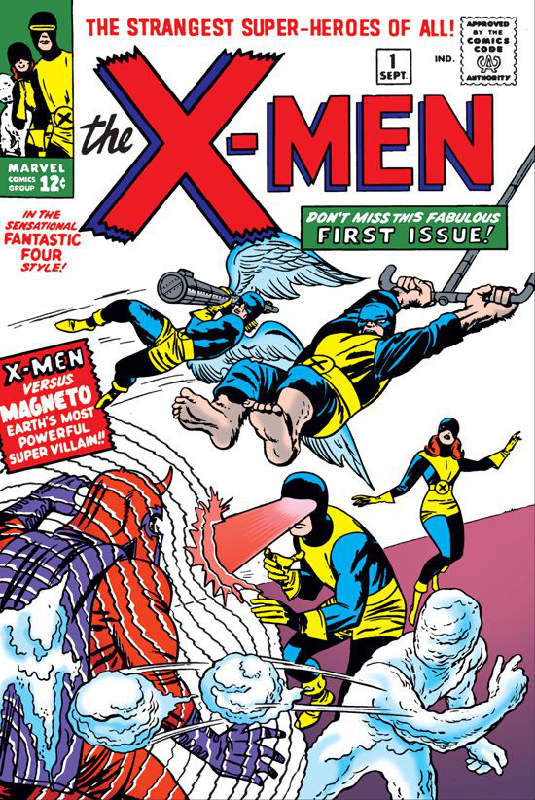
Getting back to Lindsay Anderson (and still in the 70s) it seemed all sorted: My screenplay incorporated the ethos of Terry and the Pirates imposed on a rickety commercial airline in a post-war India emerging from colonialism. However, Lindsay changed his mind about turning it into a film. It turned out that it was his brother’s story – an ex-pilot, a difficult, distressed identity. Stuff came out but nothing went in.
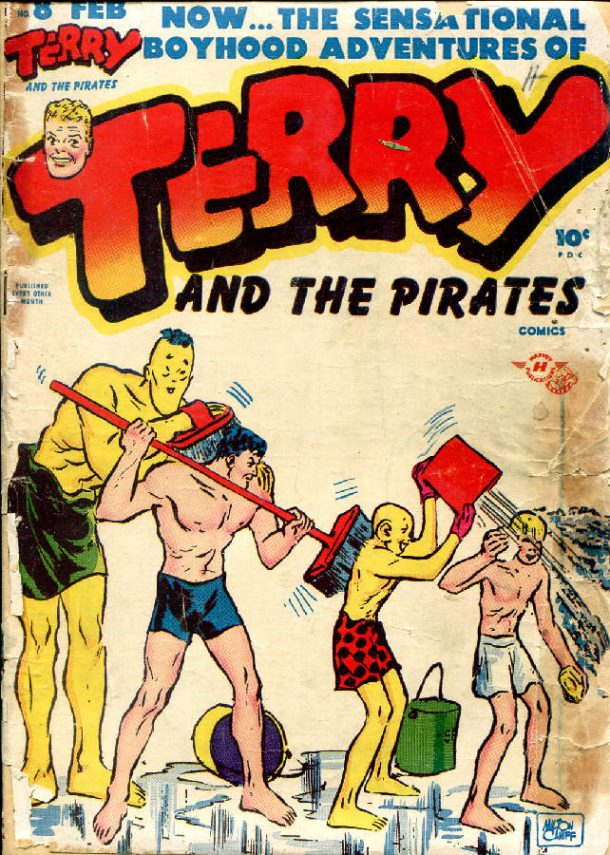
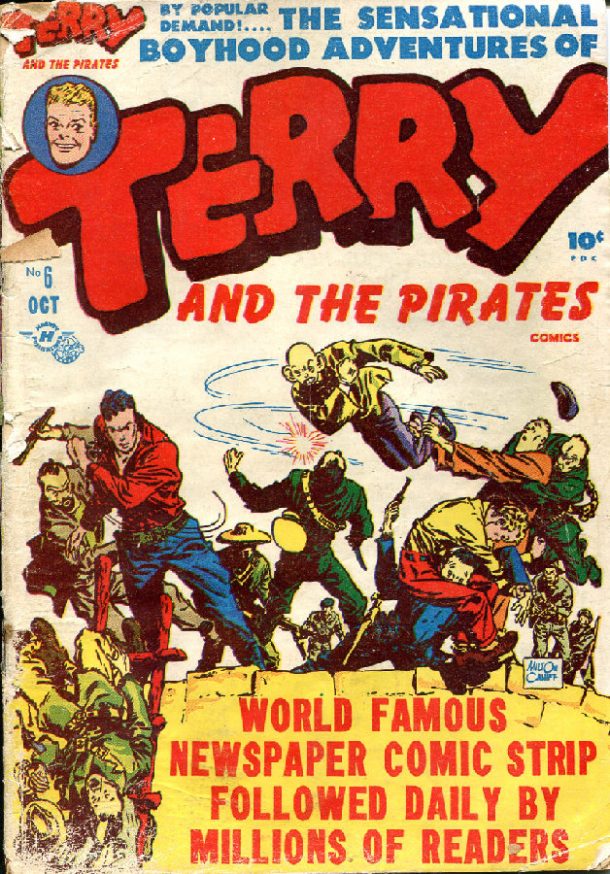
This small vignette of Lindsay’s family is intended to show how someone like me fitted into his unordinary life despite my attachment to comics. Lindsay’s dumpy Indian sister-in-law wore saris and floated about silent and barefoot. The daughter was equally quiet. The father, Lindsay’s brother, was unnervingly voluble.
A film unit occupied Lindsay’s place making Is that all there is? , an autobiographical documentary he wrote and directed. While he addressed the camera, his nephew came in and emptied a jug of water over Lindsay’s head. Wet but undaunted Lindsay pressed on without missing a beat. The camera had not stopped.
The nephew was a large wild fellow who challenged anyone who looked at him. Wearing pyjamas outside Hampstead station he was spotted by a tubby, quirky American. They got involved. He dumped her. She moved into my place. A few months later he wanted her back. They got married.
When I was alone with Lindsay’s mum it was apparent that she was pretty frightened of him. She’d been married twice – both husbands were Brigadiers serving in India where Lindsay was born.
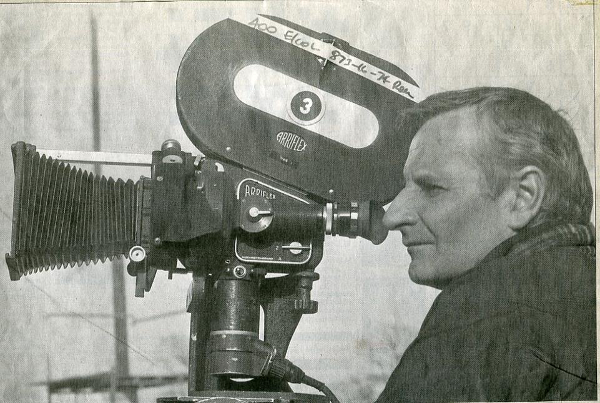
After wringing out the family washing, Lindsay sighed; all of that was why a screenplay on his brother’s experience was not possible. Collaborating with Lindsay’s brother, the garrulous Murray, would be a nightmare. But if Lindsay had no intention of going anywhere with it, why did he get me so involved? He had no answer.
I was left with Lindsay’s unapologetic excuse: It would simply be impossible working with his brother. Then, as if on cue, Murray came in, talking non-stop, flapping all over the place – he was certainly a pilot without a compass.
That wasn’t the only time I was the recipient of Lindsay’s generosity to others.
He sent a young Belgian director to me. The dishy youth moved into my place in Chelsea. Lindsay was livid. The Belgian had directed The Bomb, an award winning short which featured Betsy Blair (nominated for an Oscar for Marty). She had been married to Gene Kelly whose genius she failed to realize. Now she was married to Lindsay’s friend and peer Karel Reisz (director of Saturday Night Sunday Morning) both heavyweights in British film and bemused by my interest in comics.
Interestingly, on reflection, I had had misgivings about basing my screenplay on the inimitable Terry & the Pirates, not least because of its incipient racism. The depiction of Chinese characters is disgusting. Nowadays, I suppose, the fatuous response to these crass portrayals tends to be, “that was what it was like in those days”. However, in contrast to the excellence of the art and the brilliant frame sequences, the race delineation was indefensibly tawdry and bigoted.
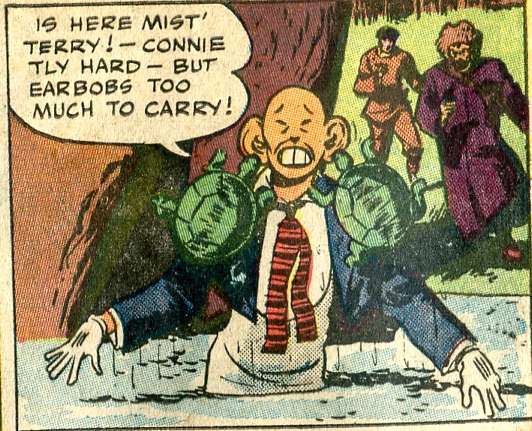
An equally racially dubious follow-on who was also flying above the clouds in the 1940s was Blackhawk, a wartime patriotic team of pilots – CIA-inspired vigilantes defending democracy and freedom, targeting dictators and criminals.
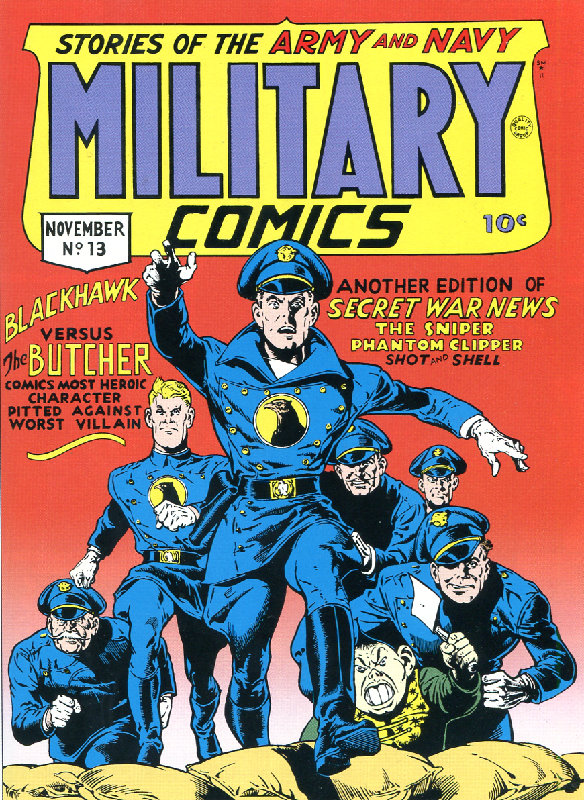
The seventh member of the team was an aspiring pilot who was never allowed the Nazi-inspired uniform or his own plane, but served as the chef, whose skill with a meat cleaver was impressive. Unfortunately, he was usually dressed in a parody of Chinese ethnic costume, with chubby features and a pigtail. His name could only be ‘Chop Chop’. Over the years his appearance altered in keeping with changing attitudes. He lost his pigtail, but not the onerous name.
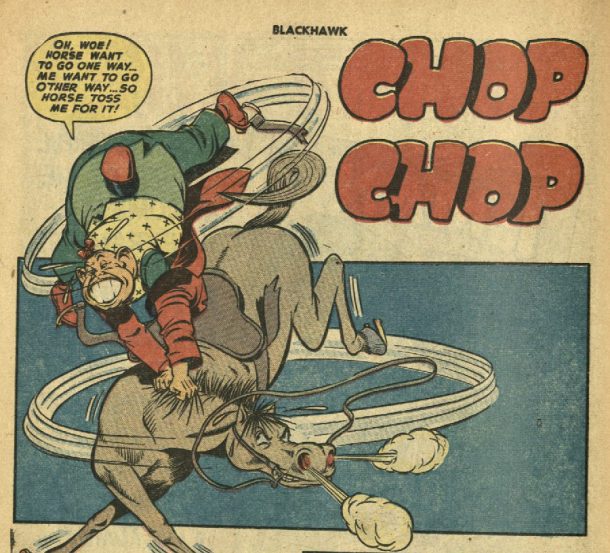
Nuff said for the moment.
Overall, filmmakers of the 1970s I worked with were disinterested in comics. However, the affable director of Deliverance, John Boorman, was enthralled by my interest.
While I was on the editing team at Ardmore in southern Ireland, Harley Yee, my dealer in Detroit, shipped me comics straight to the studio. When postproduction relocated to De lane Lee in Soho, my comics crossed the Irish Sea packaged together with the film cans. Working with Boorman paved the way to my next job with Robert Altman. His editor was a longhaired stuttering Aussie, who delighted in comics, especially the Pirate comics published in the 50’s by Hillman and EC. Though initially a kindred spirit, ultimately our shared love of comics wasn’t enough. I left the film before I got fired.
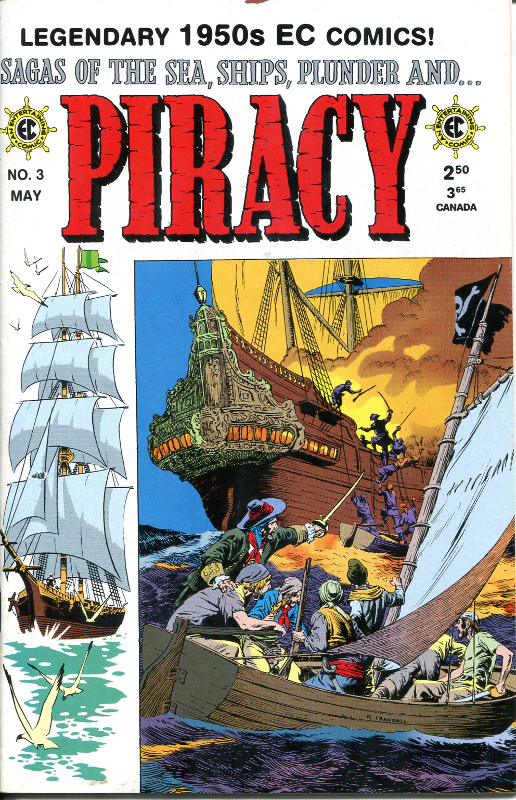
During those high earning years in the 70s, I was spending 40% of my income on comics. With many fellow collectors looking for similar things, the range was limited. However, my sweep was broad and almost all-encompassing. Poor condition never put me off. Unlike many collectors, my motive was quantity of quality material, before and through The Golden Age, from Superman to the era of the Comics Code, imposed on the industry in 1954. Those were my parameters.
My aim was to create a reference library reflecting my taste. The destination was always the V&A, but getting the collection into the museum proved to be a lengthy and arduous process. I had to explain why they had to accept my collection and no other.
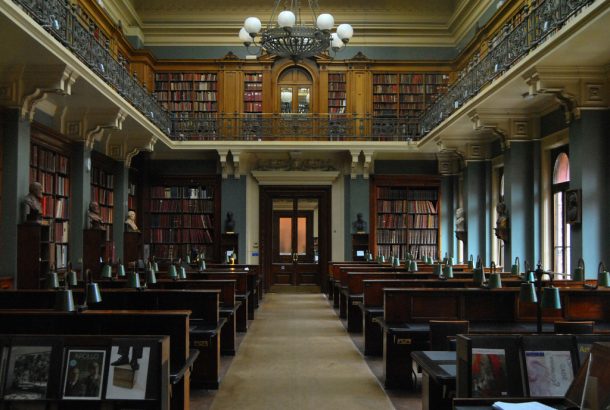
Meanwhile things with KK and Arrow were not brilliant. A minor issue for me was seven-year old Arrows’ liking for Hergé’s Tintin.
I disliked Tintin. The clear line of the young detective always struck me as frothy, and of course this was compounded by the extraordinarily racist Tintin in the Congo, published in 1931. At the time however, there were few voices that attacked the racist enormity of the Belgian Congo. One of the few that did was the Irish patriot Sir Roger Casement. He vilified Leopold II in 1905 in his report on the exploitation of the Congo and the treatment of its natives by Belgian soldiers. His good intentions didn’t save him from the gallows however. He was convicted as a spy in 1916, years before the whitewash of the Congo by Hergé’s Tintin.
I was happy to see recently, that the story of Roger Casement had been told in a new graphic novel by Fionnuala Doran.
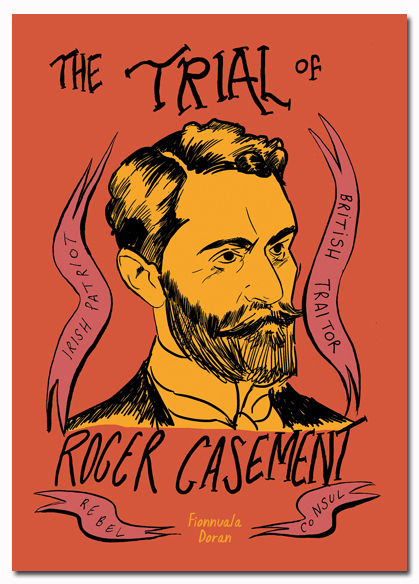
The success of Tintin was worldwide, but it was never popular in the US. Interestingly, CC Beck’s Captain Marvel had a similar line sans the fussy backgrounds. Captain Marvel flew higher than Superman, and that was his downfall.
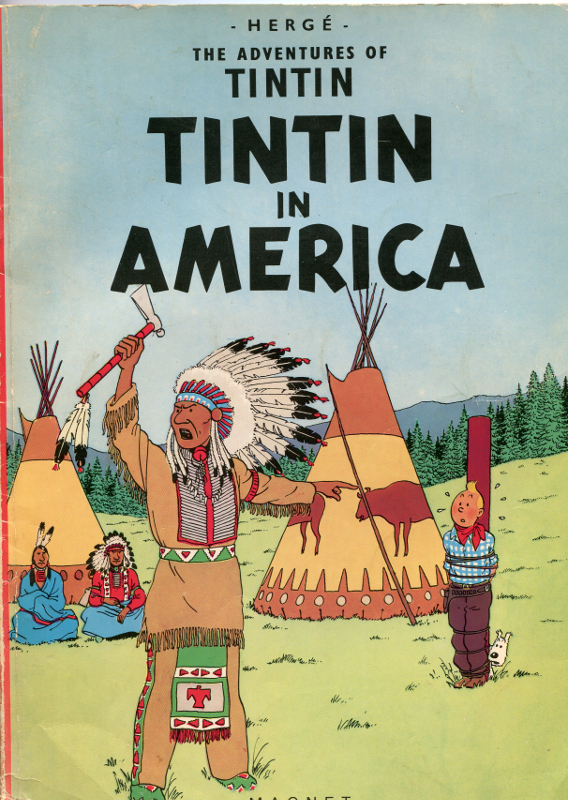
In 1955, Captain Marvel and his family at Fawcett died a publishing death. It took two powerful forces to achieve this. One was Senator McCarthy’s communist witch-hunt, and the other was Superman.
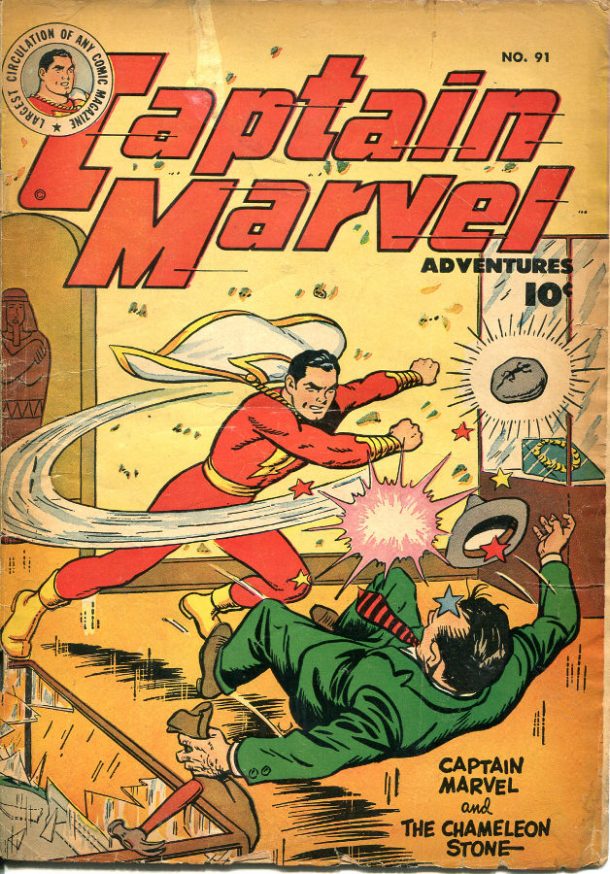
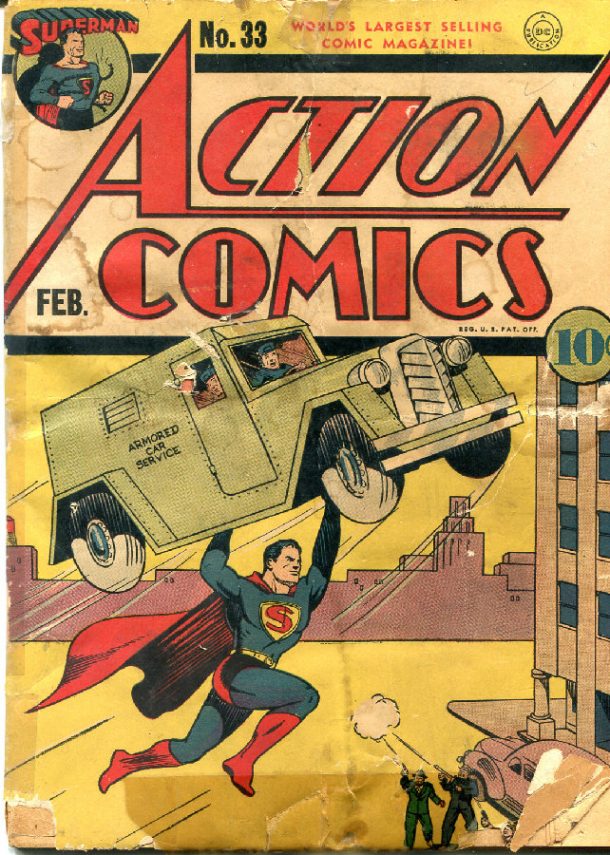
It was a ghastly stitch-up, using the fluidity of copyright law. The guilty fact was that Captain Marvel was leading in the market place, far outselling Superman. Not only that, but he was an opponent of the right wing and the bigot’s brigade. Furthermore, Captain Marvel was always more intelligent and wittier. He could easily surpass the frailty of Belgian/French froth like Tintin in popularity, but who could tackle Superman when he had the law on his side?
When it comes to the moral issue, Hergé’s reputation remains suspect, squeezed between the colonial Belgium Congo and wartime Germany. A subsequent contrast to the officious Tintin in the Congo was the exemplary Corto Maltese, who confronted and elucidated early 20th century colonial conflicts. From Kenya to Ethiopia, Corto tread closer to Sir Roger than to Hergé. The scratchy line of Hugo Pratt with its astute observation, its epic perspective, and its flair for richness of character, was unique. Corto Maltese sailed where Terry was too foolish to fly. Only Bud Fisher’s early Mutt and Jeff went boldly further with a bellyful of laughter in the struggle against racism.
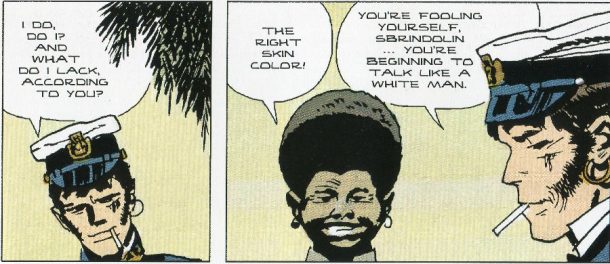
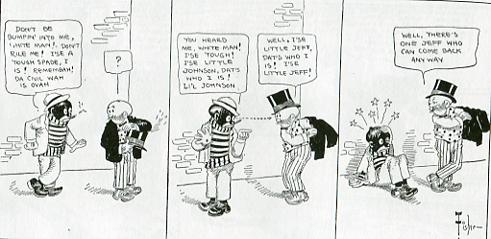
Nonetheless, Arrow was fortunately also very taken by Reed Crandall’s Blackhawk. KK was setting herself up making cowboy shirts. Dell Western comics had glossy photo covers with elaborate cowboy shirts. These covers were her best reference. She made us three Blackhawk shirts with an appliqué of the emblem on the chest – perfect facsimiles:
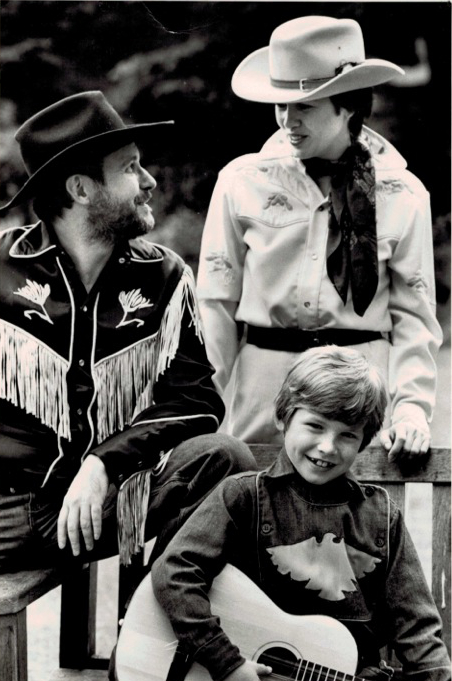
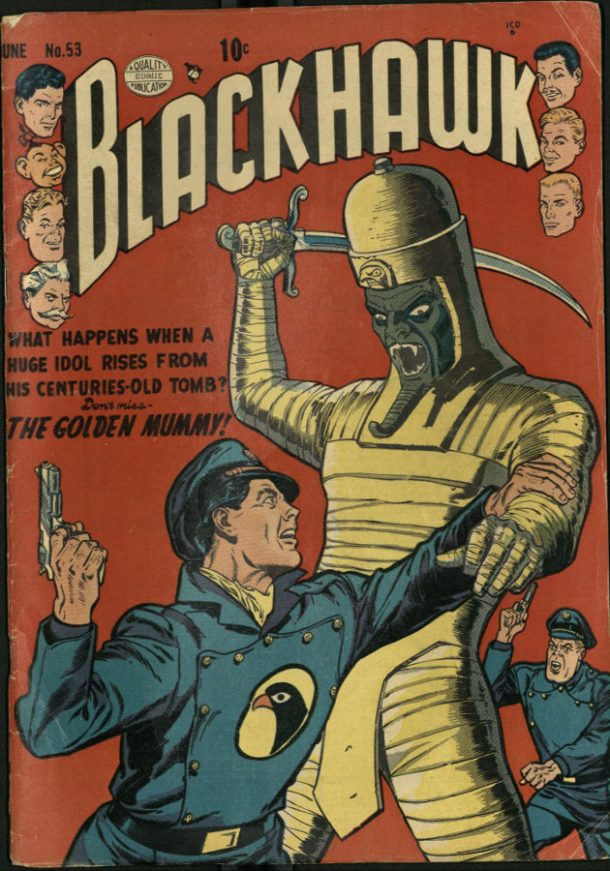
Blackhawk presented a spectacular ballet of the spirit, with static figures suspended in mid-space with frozen speed and minimalist backgrounds – superbly uncluttered. The great Will Eisner, a patriot who was not in league with superheroes, scripted Blackhawk at its best. Eisner also wrote and drew The Spirit, who pretended to be dead, acquired a superhero status, lived under a tombstone and had a black sidekick − a bold step for the 1940s. Unfortunately, the stereotypical interpretation was irretrievably unsavoury. Years later, Eisner apologized for his creation of Ebony White, but it was too little, and too late. The name married to the rendering sticks in the craw.
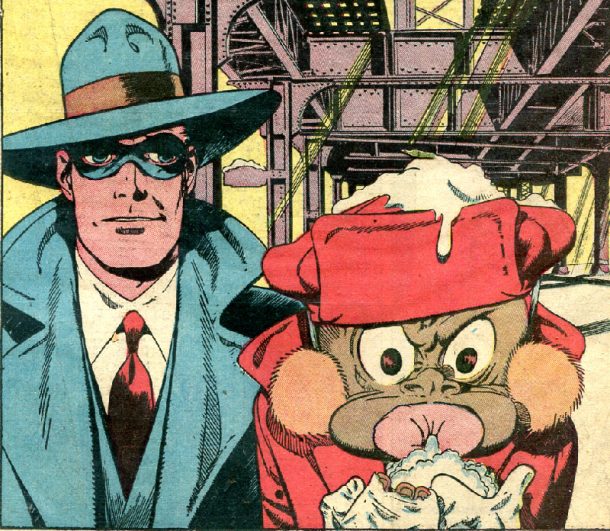
Chop-Chop and Ebony White were both jokey victims of Eisner’s misplaced liberalism; the incipient danger of art. Maybe Eisner initially had no idea how his well-meaning intentions would be interpreted.
Attending annual conventions and comic marts in the 1970s was a family outing. On one occasion, I bought a slew of early Blackhawks. The vigilantes of the skies flew wherever bad was to be found, later, frequently, this meant the Commies. Blackhawk, and his post-propeller jet team operated from a secret island, ready to strike in defence of democracy. Their battle cry – Hawk-A-A-A!! resounded from plane to plane, and crossed the frames in bold lettering. A few years before that, Airboy Comics had a similar character. Skywolf presented a rougher-hewn pilot – a gutsy precursor to Blackhawk. He had no emblem but he sported a terrific white wolf’s head.
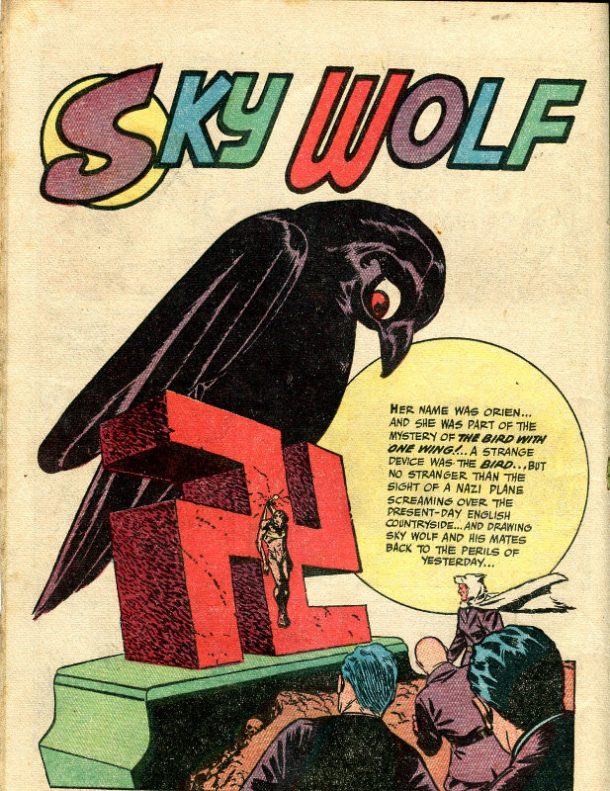
The special guest at the convention was Don McGregor, a socially-concerned writer who brought black lead characters onto the page. His creations included Black Panther, Sabre and Killraven. Don’s personality and exuberance made him a superhero in the flesh. He touched a special nerve of the 1970s with race-consciousness and an awareness of the psychedelic times.
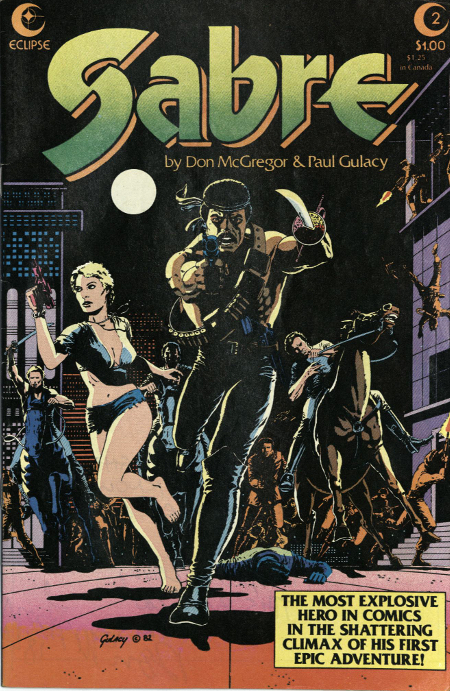
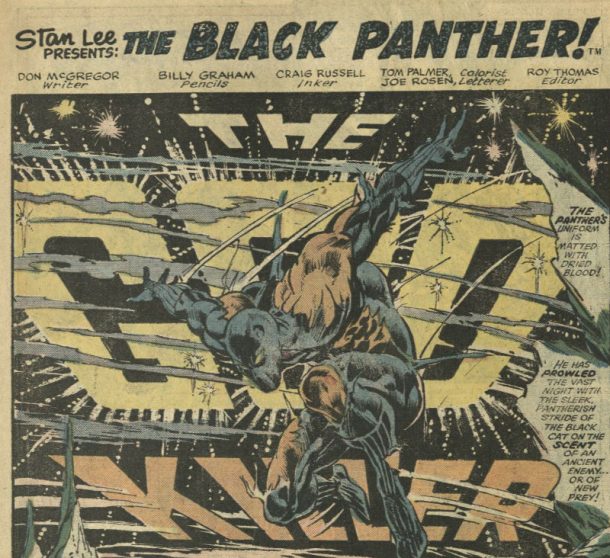
Don bounded onto the stage punching the air, railing and protesting. With a frilly-fronted shirt and strident manner, he resembled a Mississippi riverboat gambler. He was a likeable chap. The auditorium was spilling over. Facing the stage, the three of us were sprawled on the floor – wearing our Blackhawk shirts. I called out something. Don stopped talking and pointed at me – Was I the guy who’d worked on The Prisoner? I said I was. He was a fan of the series. He insisted I came forward. I sat on the edge of the stage and we conversed. I answered his questions. I told him the idea for Living in Harmony – the Prisoner episode I originated and co-wrote – was an amalgam from comics: a Dell Gene Autry, a Ziff Davis Kid Colt and a Marvel Two-Gun Kid. Ever curious Don was intrigued. I retreated to my seat on the floor. KK and Arrow beamed.
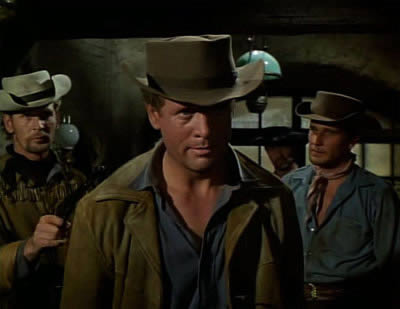
At the end we met Don’s affable wife. They insisted we had dinner together, to the chagrin of the organisers, but there was enough of feisty diminutive Don to share. The comic book celebrities prolonged their UK stay. Arrow happily lent them his bedroom.
Don rummaged through my comics. He said wasn’t I worried having so much stuff around? That made me think but I took no precautions. I told him my dream was to get the collection into the V&A, whose library jewels included original Dickens manuscripts, de Vinci notebooks and early Shakespeare Folios. I told Don I wasn’t yet ready to part with the collection.
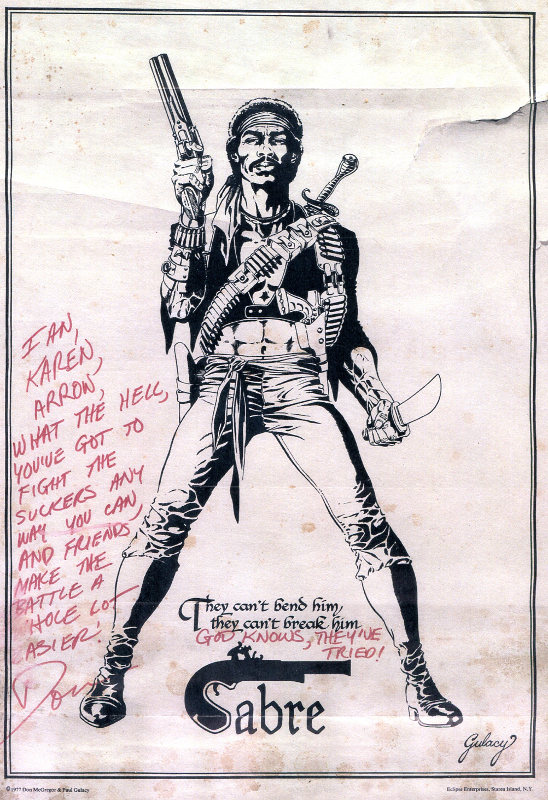
I came home one day and KK appeared upset. Arrow had something to tell me. Tearfully he presented me with a litany of how strict I’d been with him. KK was ready to pack their bags. It was one of the worst moments of my life. Suddenly Arrow flung his arms around me and said he knew I was right. After that not a cross word passed between us.
KK had stitching jobs in high fashion. I coordinated part of a ten-year celebration for fashion luminary Bill Gibb at the Albert Hall. Editing appropriate film clips I had a cutting room in Soho, collaborating with the shows compere Lord Michael Birkett.
The trendy, arts supremo and film producer Lord Michael Birkett (scion of the infamous Hanging Judge) asked about the comics lying about. The penny dropped. He knew about me and comics. Birkett had married Gloria, sister of Malcolm McDowell, the star of Lindsay’s If…., O Lucky Man! and Kubrick’s A Clockwork Orange.
Malcolm and I were trying to get a film going on the story of my ordeal in snowbound Idaho to win back KK and Arrow, related in an earlier post. Malcolm was going to play me and Nic Roeg, director of Walkabout and Don’t Look Now was going to direct it.
I was with Malcolm at a screening when Nic swept in. Putting his arm around me he announced that I’d written the best first draft screen screenplay he’d read. Malcolm muttered “he’s coming on a bit strong, isn’t he?” Finally, Nic did not direct the film. Nobody did. Options got sold, promises made – Again, nothing happened.
Once, I was sitting cross-legged on the carpet at Malcolm’s place in Notting Hill surrounded by Captain Marvel comics. I was reading them aloud. Malcolm blurted out, “You’re reading it like it’s bloody Shakespeare!”. Years later, the chap set to produce the film, returned about twenty Captain Marvels to me. When moving out of Notting Hill Malcolm had found the comics I’d lent to him. It seems improbable, but I’d forgotten about them. What a joy to get them back!
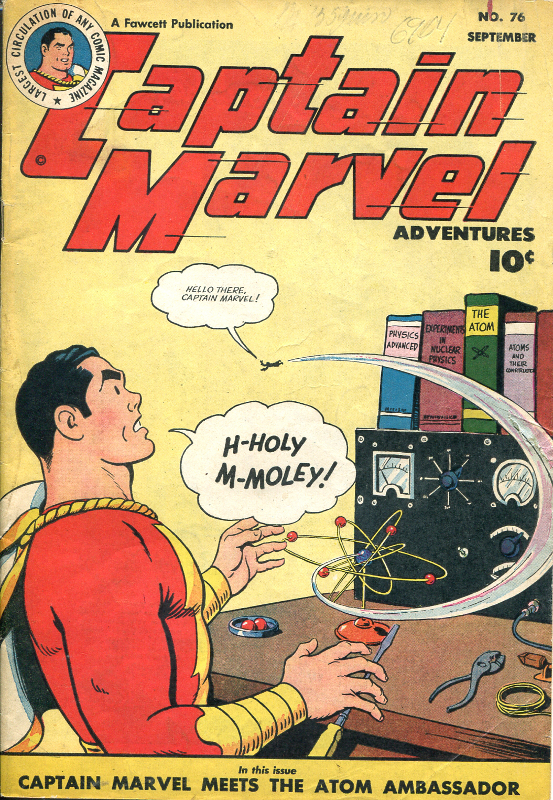
Back at the flat in Notting Hill, I asked Malcolm to do his infamous scene from Clockwork Orange. He danced, skipped and sang, re-enacting what he’d done for Kubrick. Giving full throat he belted out “Singing in the Rain” and kicked. His shoes whizzed by my ears whooshing perilously close. He was holding nothing back, and I felt far from safe. Anything could happen…
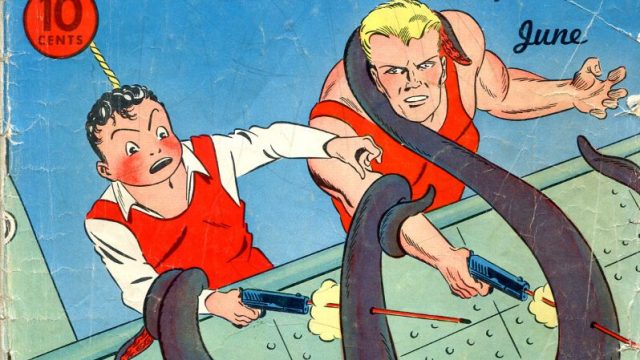
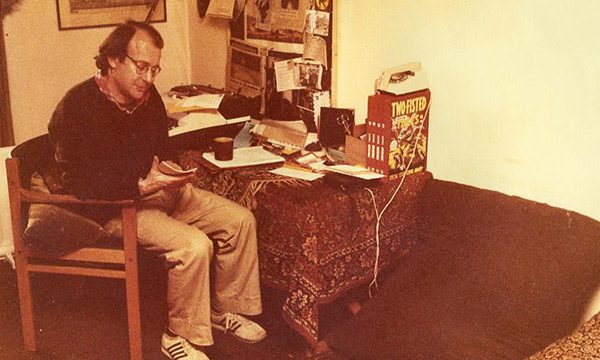
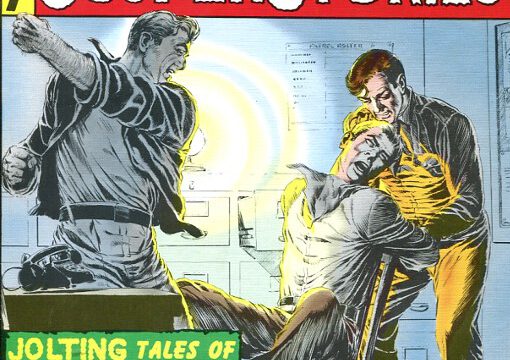
Fascinating stuff Ian. I’ve taken the liberty of posting a link on Don’s Facebook page as that’s how he does things now and he needs as much love as he can get!
Delighted to hear about Don. Would love to get in touch with Don. Best wishes. Ian.
Fascinating read as always, Ian – another example too, of the fact that if you worked on The Prisoner, the experience will follow you wherever you go. best wishes, Rick Davy.
Fabulous read. As always, I never get over the profanity of blatant racism. Interesting to learn where your ideas for ‘Living in Harmony’ originated. Why am I not surprised!? Good to see the emergence of Black Power in comic books. Is it flourishing in our troubling times? Take care, Jane x
I’ve been sitting at my office desk but I set aside my work tasks (on a theory of quality of life) in favor of catching up on the latest serialization of your quest. There is no better example of a complex life made coherent and thrilling by sustained passion, aesthetics and moral purpose.
I’ve yet to read this through properly but simply can’t let it go by that you credit Don McG as creator of the Black Panther (rather, list BP as one of his “creations”).
Black Panther’s creator (others will insist co-creator but frankly I doubt Stan Lee’s heavy involvement), as with so much else, was of course JACK “King” KIRBY. Credit where credit is due, please Ian!
there’s even a prototype for the same character, soon to be a Marvel motion picture, quite easily found, that Kirby sketched out, first off calling him The Coal Tiger (except they don’t have tigers in Africa, I don’t think!). Also, Black Panther first appeared or at least was drawn/created before the Black Panther movement came into being, fact fans, which I find intriguing. Finally on this, Don McG DID write the multiple issue epic, ‘Panther’s Rage’ in, uh, Jungle Action, an early solo outing for the character…hence the possible slip…
well done anyway, Ian, looks like another fascinating read…
Ian again another fantastic read, as everyone says. It’s so well written and brings back thsoe lost decades as if we were still in them. And chance would be a fine thing…The way you mix activism, life, youth, race, and comics is as always so insightful.
Amazing how connected everything is. Will have to look up Sabre, as I haven’t read them yet.
Well done on another excellent posting. I can’t wait to find out how you eventually managed to get your fabulous collection of comics into the V&A. And it would be wonderful to see a reissue of your book Inside The Prisoner.
Yet another jam-packed instalment. I’m amazed at the breadth of information you manage to squeeze into these posts! As ever, wonderful insights as to how the comics you collected treated issues of politics and race, discussed against the backdrop of your lively film career. Plus, of course, it’s beautifully – if sometimes horrifyingly – illustrated, which is great for people like me who don’t know who all these characters are.
Ian I have actually read this piece to the end! So many distractions and false starts…
I will definitely look more deeply, into The Spirit and Ebony White (the artwork looks extremely offensive).
I wonder whether you’re familiar with the art of John Heartfield? There’s a man worth making the subject of a film. The Skywolf front cover, puts me in mind of: The Middle Ages and The Third Reich (Wie im mittelalter so im Dritten Reich).